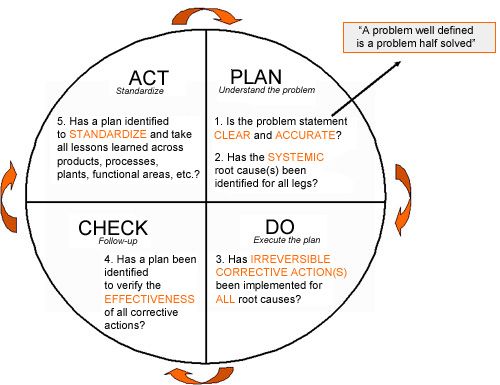The Power Of Systems Thinking

Image Credit: Unknown
“You never change things by fighting the existing reality.
To change something, build a new model that makes the existing model obsolete.”
― Buckminster Fuller
How Your Actions Impact Others: The Power of Systems Thinking
By Coach Larry Weber
A few years ago, I wrote an article about systems thinking — one of the most
important topics I’ve ever tackled — and yet, hardly anyone read it. People
tend to gravitate toward stories about people’s lives, struggles, and triumphs.
I love those stories too. But some lessons, though less flashy, are absolutely
life-changing if you take them to heart.
This is one of those lessons.
Why Systems Thinking Matters — Even If It Sounds Boring
Every team, family, classroom, or workplace is a system—a network of
interconnected parts. What happens in one part affects everything else.
It’s easy to think your job, your choices, or your role only impact you or your
small corner of the world. But that’s rarely true. Most of what we do ripples
downstream to others, whether we realize it or not.
When people don’t see the whole system, they often fix the wrong problem or
blame the wrong person. Sometimes, they even make things worse without
realizing it.
Let me show you what I mean.
The “Star Team” Story — When Appearances Mislead
In one organization I worked with, there was a team that everyone admired. They
were the “stars.” They hit record numbers, looked like heroes, and got all the
recognition.
Then there was another team — from the same company, working on the same project — but their numbers were
half as good. People whispered that maybe they weren’t working hard enough.
When we mapped the entire process — step by step from start to finish — we
discovered something eye-opening:
- The “star team” was taking the easiest tasks.
- The other team was handling the most complex and time-consuming work.
No one had realized it because the process wasn’t documented or tracked across
teams. The “stars” looked great on paper, but they were cherry-picking the
simple stuff.
Once we evened out the workload and removed unnecessary steps, the supposedly
“weak” team performed just as well — even better — than the star team.
If we hadn’t taken a systems view, innocent people would have been blamed,
maybe even fired, for something that wasn’t their fault.
What Happens When You Don’t See the System
Here’s the hard truth: most teams and organizations accidentally set themselves
up to fail because they operate in silos.
Each department, classroom, or training group focuses solely on its part, unaware of how its actions impact others. It’s like each part of an orchestra
playing their own song without listening to the conductor.
When this happens:
- One decision in “Team A” can double the workload for “Team B.”
- A shortcut taken upstream can cause chaos downstream.
- A small communication gap can cause someone else tremendous stress, frustration, or
even harm.
It’s Not Just True at Work — It’s True in Life
These same principles also apply to everyday life.
- When a teacher or administrator forgets to communicate a schedule change to a
coach, an athlete might miss practice and lose fitness without understanding
why their performance is suddenly slipping.
- When we fail to plan, we rush out the door, forget our gear for practice, and
start the day stressed — setting off a ripple that affects everyone around us.
- When a runner skips recovery days or adds extra workouts without talking to
the coach, it doesn’t just impact that athlete — it affects the whole team.
They can’t contribute at their best because one weak link in the chain affects
everyone downstream.
A Personal Example That Still Drives Me
One of the most painful experiences of my life was losing my nephew. Some of
the root causes of his death were poor handoffs between departments — unclear
communication and broken processes.
Silo A was unaware of what Silo B was doing. One team assumed another would
handle a task. No one saw the whole picture.
The system failed him.
That experience is why I am so passionate about teaching this. I’ve seen what
happens when the left hand doesn’t know what the right hand is doing — in
hospitals, schools, businesses, and even youth sports.
When systems are broken, good people pay the price.
Every Decision Has a Ripple Effect
Before you make a decision — big or small — ask yourself:
- Who will this affect downstream?
- What could go wrong if I don’t communicate this change?
- How can I make this easier, not harder, for the next person in line?
Here’s a simple way to apply this thinking in your daily life:
1. Map the flow. Write down the steps of a process — even a simple one. You’ll
be amazed at what you learn.
2. List the people impacted. Who depends on you? Who depends on them?
3. Ask for feedback. Before finalizing a decision, ask, “How does this impact
you?”
4. Fix the process, not the blame. When something goes wrong, resist
the urge to finger-point. Look at how the system allowed the problem to happen.
Easy-to-See Everyday Examples
- In sports: A coach changes the training plan without telling the trainer. The
athletes show up sore and underperform. Communication fixes that.
- In business: A salesperson promises a delivery date before checking with
production. Production scrambles, stress rises, and quality drops.
- At home: Someone forgets to refill the gas tank. The next driver is late for
work. One small action — or lack of it — rippled through the day.
- In a church or nonprofit: A volunteer doesn’t know their task because no one
explained the larger plan. People get frustrated, and good intentions fall
flat.
Each of these small breakdowns adds up. Each one affects others downstream.
The Golden Rule of Systems Thinking
Jesus said in Matthew 7:12,
“In everything do to others as you would have them do to you.”
That’s not just a moral principle — it’s a systems principle.
If you build a process, communicate, and plan with others in mind, everything
runs smoothly. Efficiency improves. Stress drops. People feel seen and valued.
Doing for others what you’d want done for you is at the heart of systems
thinking. It’s love in motion.
Final Thoughts: Building Championship Systems
Whether you’re running a business, coaching a team, leading a family, or
serving in your community, systems thinking can make a profound difference.
When people see how their actions connect, blame disappears and collaboration
begins.
Great teams and organizations don’t happen by accident. They plan, document,
communicate, and keep improving together.
You’ll reach your God-given potential when you sweat the details in planning,
check your ego at the door, and care about the people affected by your
decisions.
That’s how championships are built.
That’s how lives are changed.
That’s how love shows up in action.
Blessings,
Coach Weber
Philippians 4:13

The road to any championship in life requires transparency, reviewing and improving systems, and a commitment to always getting better. Finding the root causes of challenges that stand in the way of your next breakthrough is essential to success.
Systems thinking and process improvement projects are the tools that help you reach the next level, whether you are a billion-dollar corporation or a small non-profit just trying to survive.

Image Credit: Kaleidico

Image Credit: Campaign Creators